Seamless Living: 8 Creative Wet and Dry Kitchen Designs for Modern Homes
Have you ever wondered how the layout of wet and dry kitchens can transform the functionality of your home? In a bustling city like Singapore, maximizing the kitchen space is key, especially when juggling between preparation and cleanup areas. Here, we explore the beauty and practicality of having distinct wet kitchen and dry kitchen zones, offering seamless interior design ideas that cater to modern living.
Good design is obvious. Great design is transparent
Joe Sparano
What Are Wet and Dry Zones in a Kitchen?
The concept of wet and dry zones is often misunderstood. A wet kitchen is primarily where heavy cooking takes place, involving water, oil, and steam. It’s designed to handle the mess of cooking, cleaning, and washing dishes. Meanwhile, the dry kitchen is used for lighter preparations, like baking or assembling meals. The division keeps the kitchen organized and prevents mess from spreading, providing a cleaner, more elegant space in your home.
Imagine walking into your kitchen and seeing two well-defined areas: one for heavier cooking and cleaning, the other for more casual meal prep or entertaining. It’s not just about aesthetics; it’s about practicality, helping you manage your space better.
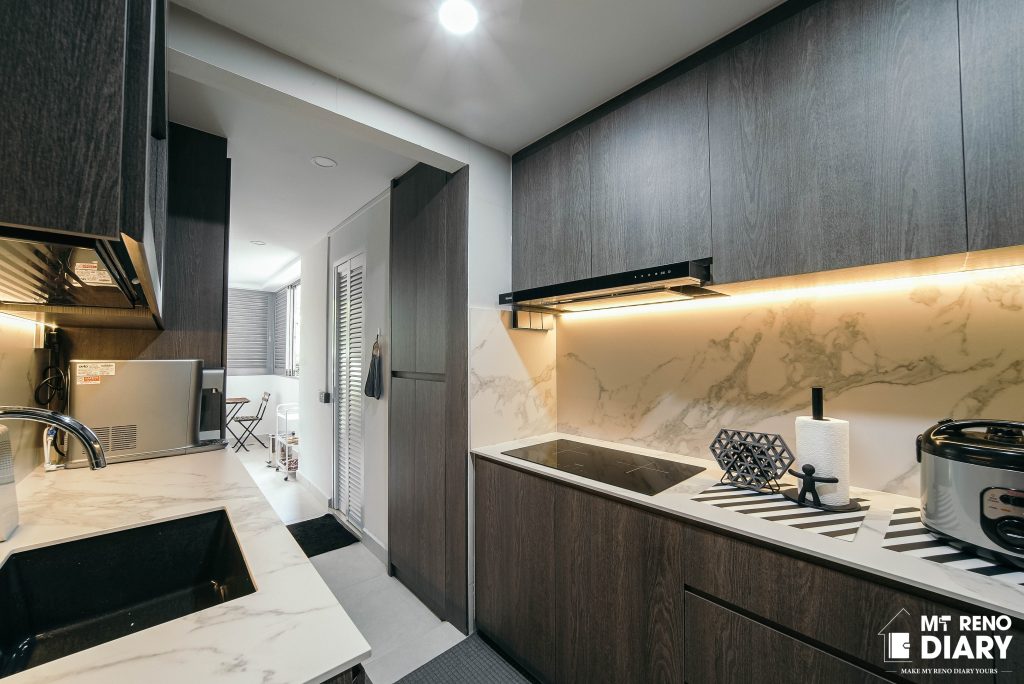
What’s Wet kitchen
This part of the kitchen where most of the messy work gets done during cooking and meal prep is known as a wet kitchen. Washing and slicing of fish or meat, frying, and cooking with a strong odor are typical tasks here. These chores are most likely to cause spills and splashes, so keeping them in their own space is a containment strategy. It includes the sink and faucet, along with the stove area. Another feature in this zone is the exhaust outlet to keep strong smells away. The wet kitchen offers little space on the counter.
The wet kitchen tends to be messier compared to other parts and hence requires more thorough cleaning than the rest of the kitchen. Therefore, materials should be seamless to ensure easy cleaning and maintenance of the counters, backsplash, and floors. Backsplash tiles and floors in ceramic or porcelain are most suitable, and built-in laminated cabinets are ideal since they can be cleaned up easily.
What’s Dry Kitchen
The dry kitchen is the light kitchen as opposed to the wet kitchen. It’s where less messy tasks happen, and minimal prep takes place. It’s an ideal space for tasks like making breakfast, heating meals in the microwave oven, preparing shakes and smoothies, or chopping fruits and vegetables.
The dry kitchen has separate counters or workstations and may even include a small sink with a faucet for light rinsing of utensils or hands. It also doubles as a communal space, complete with a kitchen island and stools, where family members can gather for light chats. For kitchen island ideas, read this. Typically, kitchen appliances like a coffee maker, microwave oven, and blender are kept in the dry kitchen.
Since the dry kitchen doesn’t experience as much mess, it requires less frequent cleaning. You can also select flooring that suits this space. For instance, you might add a rug or mat since there won’t be any wet floors to worry about.
Separating wet and dry kitchens can improve efficiency and productivity by defining workstations for different tasks. Usually, these kitchens are located close to each other so you can easily move between them, sharing appliances and items as needed.
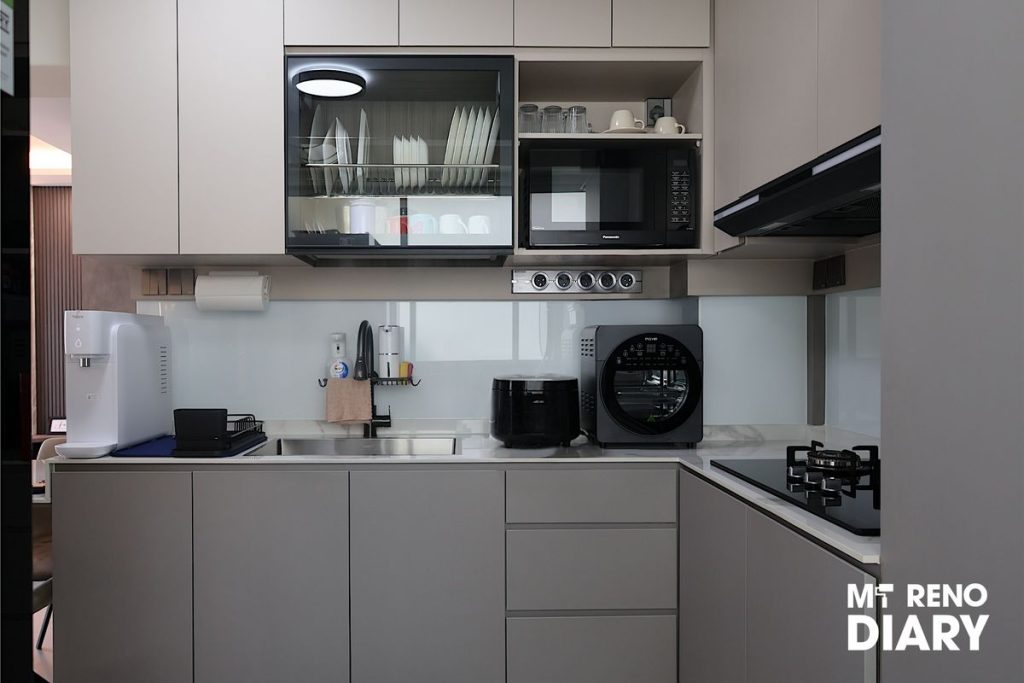
Wet and Dry Kitchen Designs You Can Explore
As you think about interior design, one of the biggest trends in Singapore homes is optimizing kitchen layouts with innovative designs. For instance, you could have a sleek dry kitchen facing the living area, serving as a space for casual meals or entertaining, while the wet kitchen remains hidden for actual cooking. The transition between these spaces needs to be fluid, allowing ease of movement and functionality.
From modern minimalist kitchens to rustic Scandinavian styles, wet and dry kitchens can fit into any interior design style. The key is choosing a layout that works for you and complements the flow of your home.
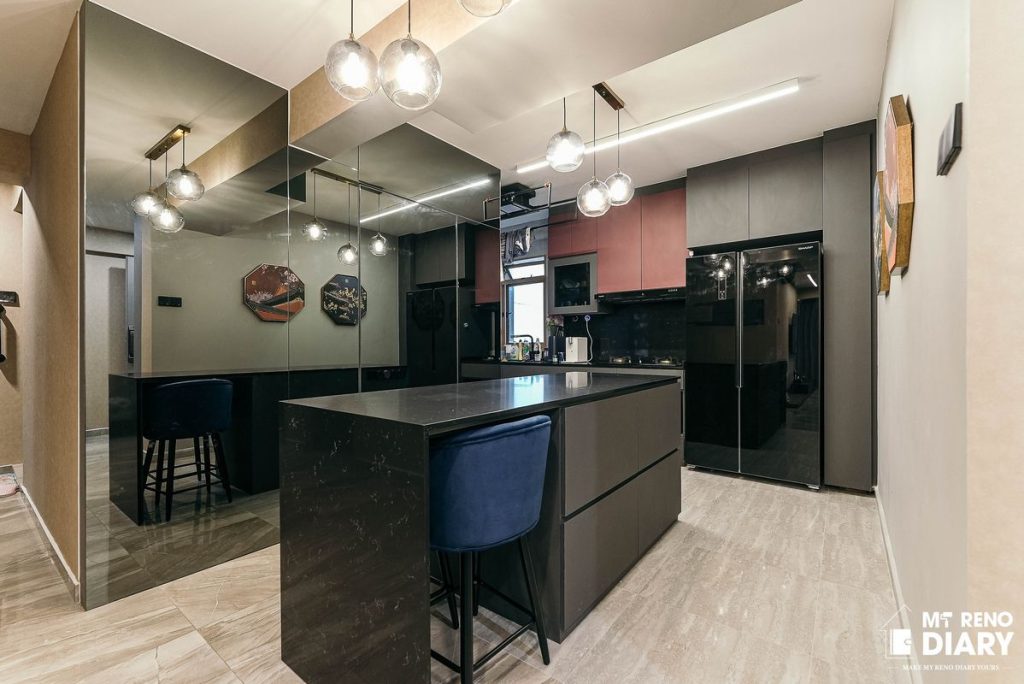
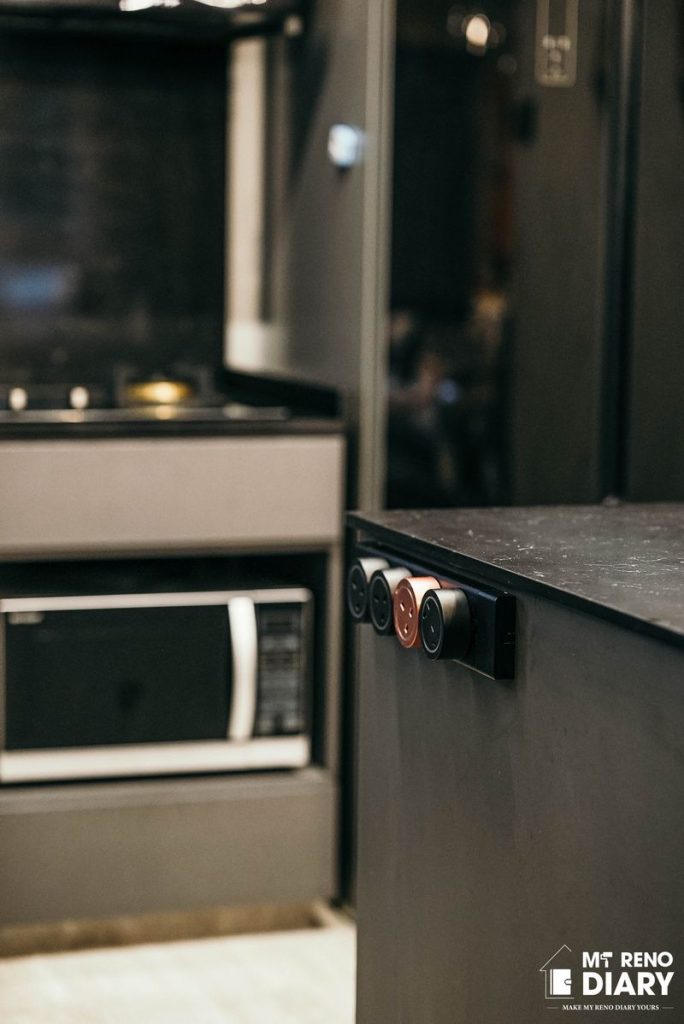
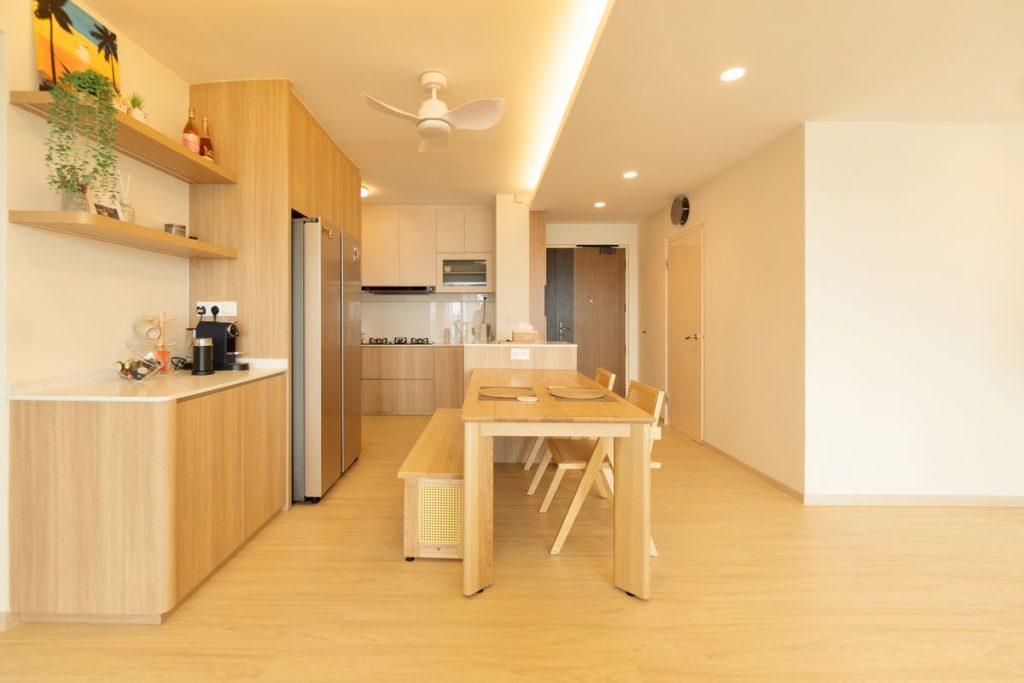
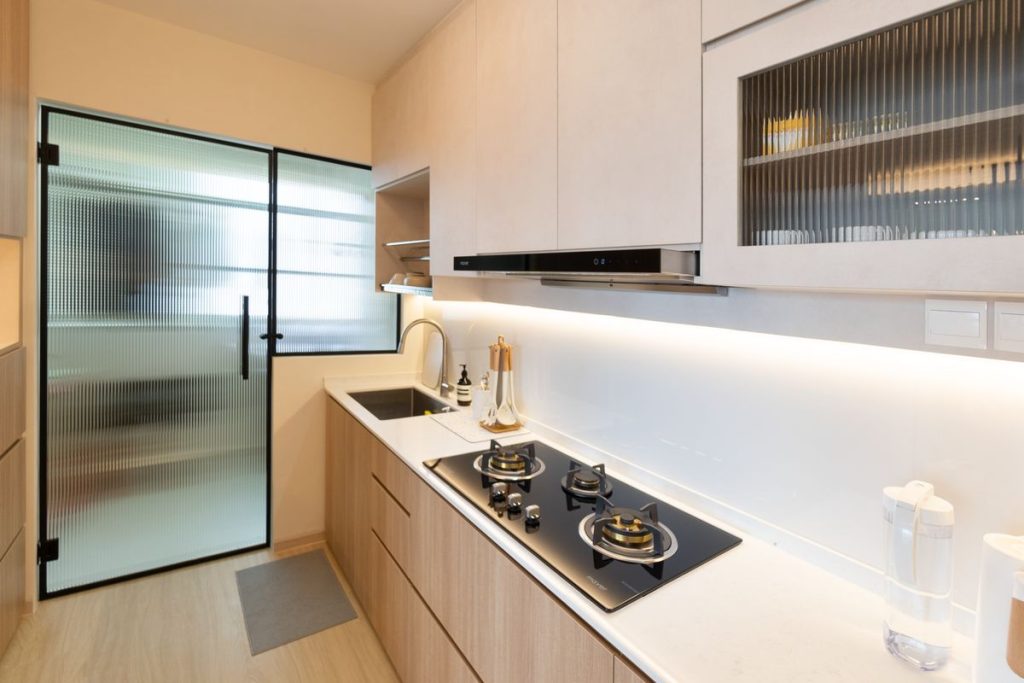
What Are the Advantages of Having a Wet and Dry Kitchen?
Why should you consider having both a wet and dry kitchen in your home? The primary advantage lies in organization. Having separate zones for cooking and prepping minimizes clutter. If you’ve ever found yourself cleaning up a mess right before guests arrive, then you know the benefit of separating these spaces. Moreover, a wet kitchen allows for heavy-duty tasks, while the dry kitchen is more refined and social, enhancing the aesthetics of your home. It’s a solution that many homeowners in Singapore are opting for as it helps in space management while keeping everything looking tidy.
There are many advantages to having both a wet and dry kitchen, not only in terms of functionality but also in hygiene and lifestyle. Here are the key benefits:
- Improved Functionality
- Zoned Space: Grouping kitchen activities into zones makes it easier to organize and execute tasks. The wet kitchen is ideal for heavy-duty cooking, while the dry kitchen focuses on meal prep and serving.
- Organized Workflow: Separating cooking steps from non-cooking ones reduces congestion during meal prep. Family members can work on separate tasks without disturbing each other, creating a harmonious kitchen environment.
- Enhanced Hygiene
- Less Contamination: By separating wet and dry areas, you ensure more hygiene in the kitchen. This reduces food spills, contamination risks, and cooking residues, keeping food prep areas safer.
- Less Clean Up: Wet kitchens require more cleaning after heavy cooking, but dry kitchens are easier to maintain, reducing the overall stress of upkeep.
- Better Organization
- Storage Facilities: Wet kitchens provide ample storage for cookware, utensils, and ingredients during meal prep. Dry kitchens can be equipped with appliances like coffee makers and toasters.
- Design Flexibility: The separation allows more efficient use of appliances and tools for each specific area, especially helpful in homes with multiple family members or for frequent dinner hosts.
- Reduced Odors and Mess
- Fume Containment: Separating the wet and dry kitchens with a room divider or glass door helps contain oily fumes, smoke, and smells within the wet area.
- Less Grime: The wet kitchen tends to be messier, but containing grime within it helps keep the dry kitchen cleaner and more organized, ideal for social gatherings and meal serving.
- Aesthetic Appeal
- A Center of Attraction: A dry kitchen can be a focal point in your home with elegant cabinets and modern appliances, making it an ideal space for entertaining guests and casual dining.
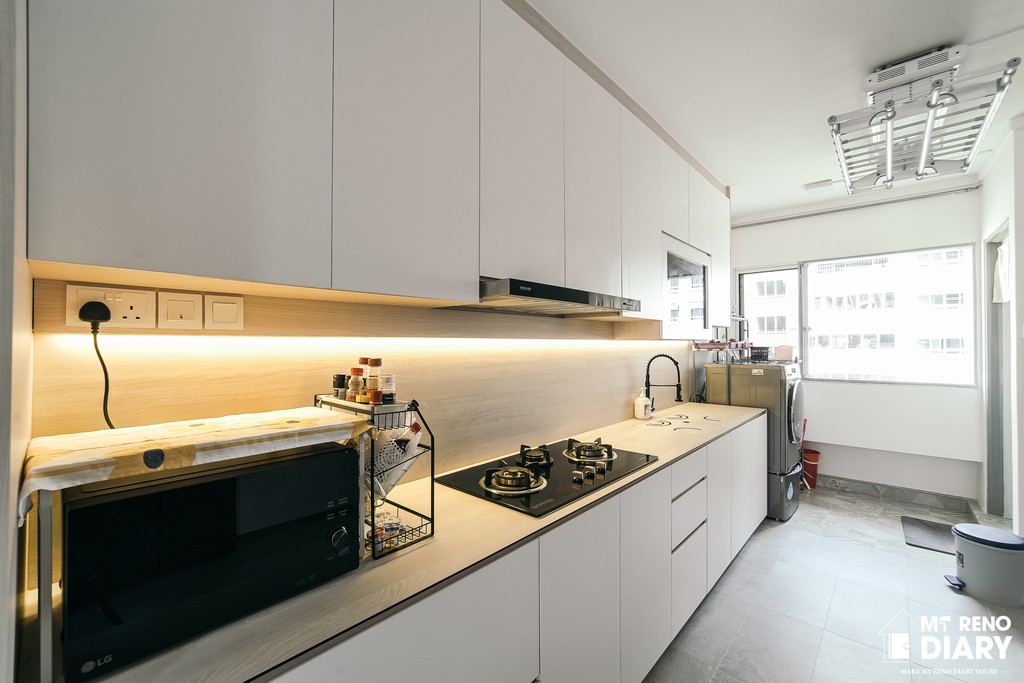
Innovative Design Concepts for an HDB Wet and Dry Kitchen in Singapore
In HDB flats, where space can be limited, creativity in interior design ideas is essential. Think about installing sliding glass partitions to separate your wet kitchen from the dry kitchen, which not only saves space but also keeps odors and steam contained. Consider compact but elegant storage solutions that enhance functionality without sacrificing style.
Your kitchen can become the centerpiece of your home with the right combination of colors, materials, and finishes that suit your interior design style.

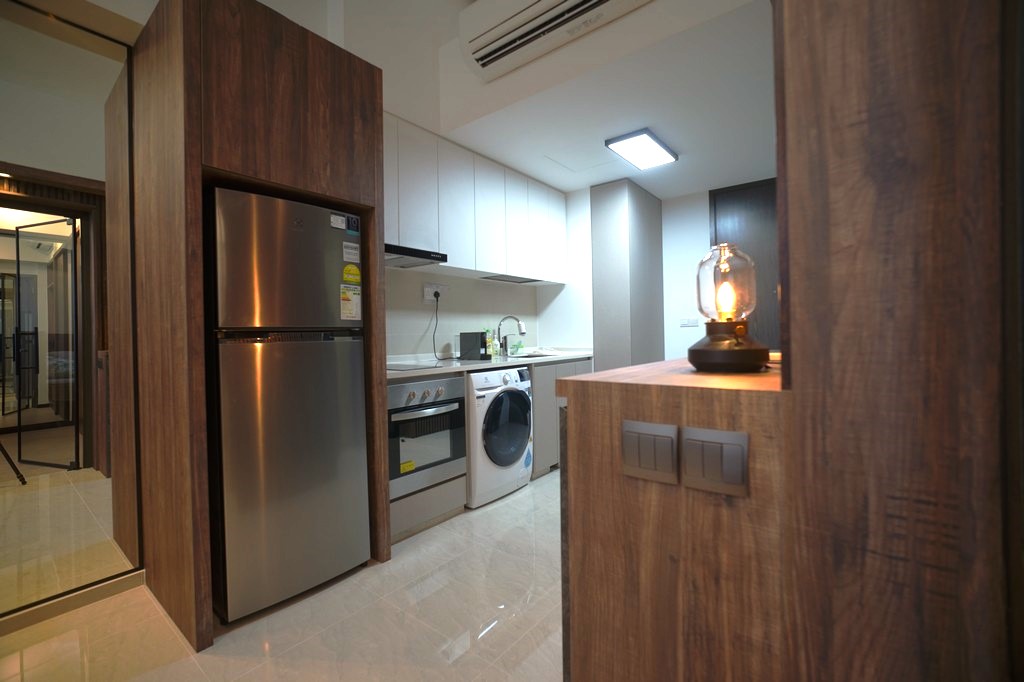
Maintenance Tips for Wet and Dry Kitchens
Once you’ve set up your wet and dry kitchens, how do you maintain them? A key part of interior design is not just about the look but also the upkeep. Regular cleaning of both the wet kitchen counter and appliances in the dry kitchen is crucial to maintaining a seamless look. Use moisture-resistant materials in your wet kitchen to prevent damage from water and steam. For the dry kitchen, focus on wiping down surfaces and maintaining organization. By planning for low-maintenance, easy-to-clean designs, you ensure that both parts of the kitchen remain functional and beautiful over time.
Wet Kitchen Maintanance Tips
The wet kitchen (or dirty kitchen) is where heavy cooking happens, generating messes like frying and washing. Here are tips for proper care:
- Quick Clean: Wipe surfaces immediately after use to prevent grime buildup. This applies to countertops, stovetops, and sinks.
- Use strong materials on walls and floors: Porcelain or ceramic wall tiles are great for resisting grease and are easy to clean. Laminated cabinets with wipeable surfaces are also recommended.
- Proper Ventilation: Use exhaust fans and open windows to remove smoke and cooking odors, which is essential for maintaining clean air.
- Regular Deep Cleaning: Schedule deep cleaning sessions at least once a month, especially in hot areas, to prevent mold.
Dry Kitchen Maintenance
The dry kitchen, primarily used for light cooking and food preparation, is easier to maintain. Here are some tips:
- Opt for More Durable Materials: Since the dry kitchen doesn’t handle heavy cooking, you can choose luxury materials like granite countertops or glossy cabinet finishes for lighter maintenance.
- Stay Organized: Keep clutter at bay by clearing countertops and ensuring appliances are stored properly, which helps prevent dust buildup.
- Light Cleaning Routine: Dust and wipe surfaces regularly with a weekly cleaning routine. This keeps the space looking fresh with minimal effort.
- Ventilation Solutions: While a dedicated ventilation system may not be necessary, opening windows or using electric fans occasionally helps keep the area fresh and free of mustiness.
How would you design your ideal wet and dry kitchen to suit your daily cooking and entertaining needs?


